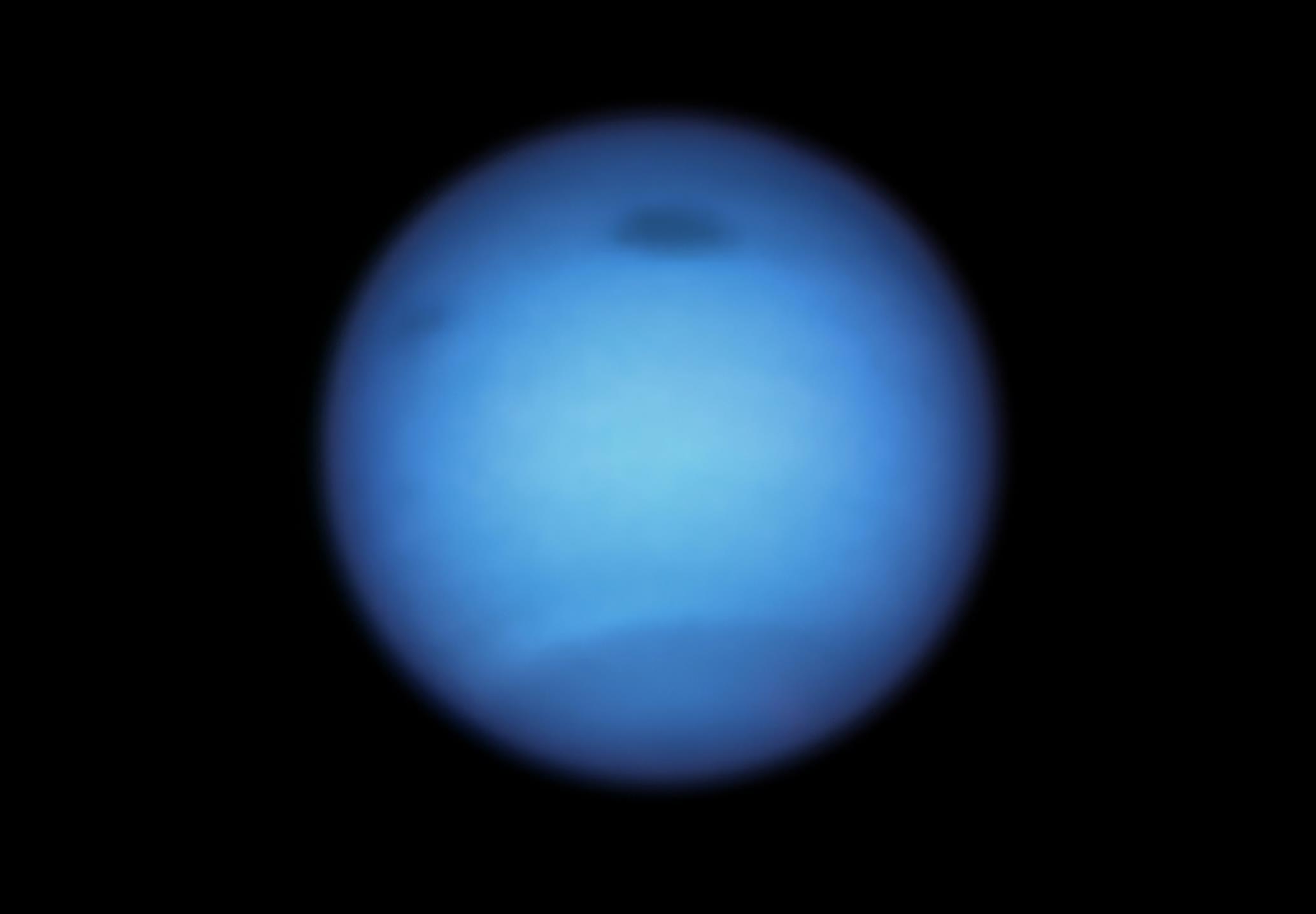Originally Published by:
-
Milky Way may be full of aliens who annihilated themselves
-
Pompeii dig uncovers secrets from unearthed fast-food restaurant
-
Expert calls US coronavirus response unimaginative
A massive dark storm on Neptune that was first spotted two years ago has suddenly changed directions, leaving experts without answers.
The storm was discovered by the Hubble Space Telescope in 2018, where it was seen on the planet’s Northern Hemisphere. In 2019, it was seen moving toward the planet’s Southern Hemisphere, but in August 2020, it started moving back north again, unlike other dark spots that have been spotted on the ice giant in the past. Another smaller, dark spot was also seen, believed to be a part of the larger storm that broke off into a separate storm.
“We are excited about these observations because this smaller dark fragment is potentially part of the dark spot’s disruption process,” Michael H. Wong of the University of California at Berkeley said in a statement. “This is a process that’s never been observed. We have seen some other dark spots fading away and they’re gone, but we’ve never seen anything disrupt, even though it’s predicted in computer simulations.”
NASA first flew by Neptune in 1989 with the Voyager 2 spacecraft and took pictures of two dark spots. It wasn’t until 1994 that it was observed on a regular basis by the Hubble. Since then, the space telescope has looked at the “Great Dark Spot” as well as other dark spots on the planet.
The dark storm in question is believed to be 4,600 miles across and is the fourth observed on Neptune since 1993. Unlike hurricanes on Earth, which are low-pressure and spin counterclockwise, these storms rotate clockwise and are high-pressure systems. But as they move toward the equator, they’re impacted by the Coriolis effect, which weakens them, ultimately disintegrating after it reaches a so-called “kill zone.” This particular storm did not.
“It was really exciting to see this one act like it’s supposed to act and then all of a sudden it just stops and swings back,” Wong said. “That was surprising.”
Wang believed the smaller storm, albeit one that is 3,900 miles across, was the result of the larger storm being disrupted, but that isn’t the case, adding intrigue to what’s causing it.
“I didn’t think another vortex was forming because the small one is farther towards the equator,” the researcher explained. “So it’s within this unstable region. But we can’t prove the two are related. It remains a complete mystery.”
Neptune is still relatively unexplored, as is Uranus, even with the Voyager 2 snapping photos of both planets in 1986 and 1989.
In August, researchers developed computer models that suggest both planets are composed “primarily” of a strange form of water.
In March 2019, scientists at NASA JPL proposed a mission that would explore Neptune’s largest moon, Triton, which some have theorized could have an ocean hidden beneath the surface.
Share this article:
Source: Read Full Article

